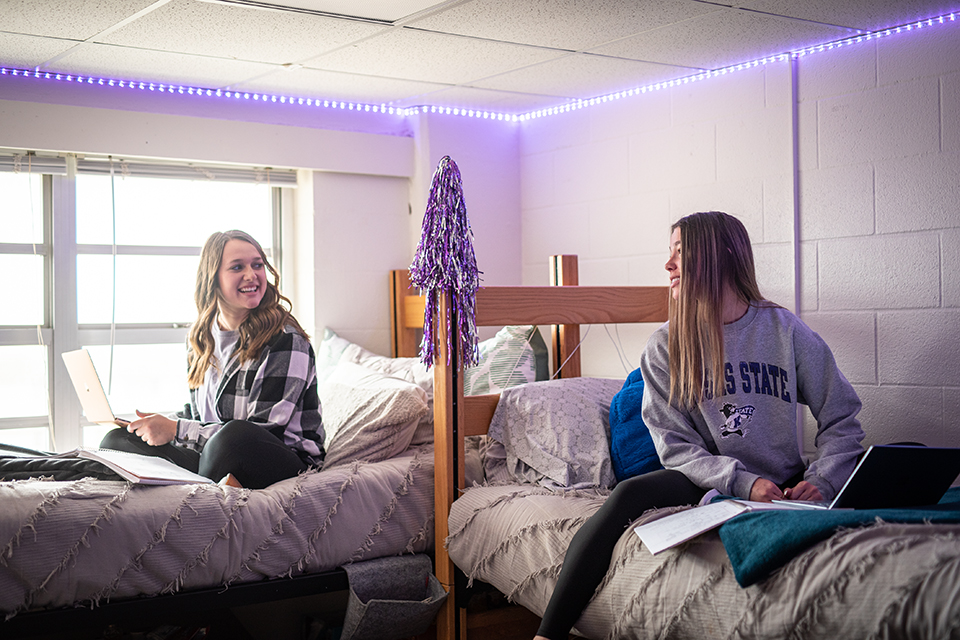In recent years, the debate between online schooling and traditional education has gained significant traction, particularly as technology continues to reshape the way we learn. Both systems offer unique advantages and challenges that cater to different learning styles, lifestyles, and educational needs. As more students and parents explore their options, it becomes vital to understand the implications of each approach. This guide will delve into the pros and cons of online school versus traditional education, providing key considerations to help inform decisions regarding the best educational path for students in today’s rapidly evolving landscape. 
Image source: https://pixabay.com/photos/study-school-college-nyc-apartment-7217599/
1. Flexibility and Convenience
One of the main advantages of online schooling is the flexibility it offers students. With the ability to access coursework from anywhere with an internet connection, learners can create a schedule that fits their individual needs. The people at Silicon Valley High School note that this setup allows for a tailored learning experience, enabling students to balance academics with other commitments such as part-time jobs or family obligations. This flexibility can also aid those who may require a slower pace due to personal challenges or learning styles. In contrast, traditional education often follows a fixed schedule, which can be limiting for some students. However, this structured environment helps cultivate discipline and time management skills. A consistent daily routine can enhance focus and ensure that all students receive a comprehensive education in a supportive setting. For those who thrive on regularity and face-to-face interactions, this structure may prove invaluable.
2. Social Interaction and Community
Traditional education excels in providing opportunities for social interaction among peers. Students engage in daily face-to-face interactions, fostering friendships and developing critical social skills that are crucial for lifelong success. These in-person relationships contribute to a sense of belonging and camaraderie, as students participate in group activities, sports, and other extracurricular programs.
On the other hand, online schooling often lacks the same level of social engagement. Although many online programs incorporate virtual discussions and collaboration tools, some students may find themselves feeling isolated. Schools that offer online education can mitigate this by encouraging participation in community events or local meet-ups, helping students forge connections outside of their digital learning environment, and fostering a sense of community.
3. Learning Styles and Personalisation
Online education tends to cater to diverse learning styles effectively. With various multimedia resources available—such as videos, quizzes, and interactive modules—students can engage with the material in a way that resonates with them personally. This method provides opportunities for self-paced learning, enabling students to spend more time on challenging subjects while progressing quickly through concepts they grasp easily.
Conversely, traditional classrooms rely heavily on structured lesson plans and live instruction, which may not accommodate all learning preferences. While some students benefit from this approach, others may struggle to keep up with the pace. Nevertheless, a skilled teacher can adapt their methods and provide one-on-one assistance when needed, creating a more interactive and responsive environment that can be advantageous for various learners.
4. Quality of Instruction and Resources
The quality of instruction varies considerably between online and traditional education. In traditional classrooms, students typically benefit from direct access to trained educators who can provide immediate feedback and support. This hands-on interaction promotes engagement and allows for the dynamic adjustment of lessons based on student understanding and feedback.
In online schooling, the effectiveness of instruction relies heavily on the digital platform’s resources and the educators’ ability to engage students from a distance. Well-designed online curricula can provide rich resources, yet the lack of physical presence can make it difficult for some students to form strong relationships with instructors. Ensuring that online educators have the right tools and training is essential for maintaining educational quality and addressing individual student needs.
5. Cost and Accessibility
Regarding cost, online schooling often presents a more affordable option, particularly when considering transportation and associated expenses of traditional education. Many online programs offer free or low-cost resources, making education accessible to a broader range of students. Additionally, the flexibility of online schedules can allow students to work or pursue other interests, making education more economically feasible for families.
Traditional education typically incurs costs related to tuition, transportation, and additional materials such as textbooks. However, many public schools provide free education, which is a significant advantage for families seeking quality education without financial burden. Understanding the financial implications of each education type is crucial for families when deciding on the best option for their children.
6. Long-term Outcomes and Success Rates
Research indicates that both online and traditional education can yield successful outcomes for students, but the effectiveness often depends on individual circumstances. Some studies suggest that online students may achieve comparable, if not superior, learning outcomes due to the ability to tailor their studies. Moreover, the technology skills developed in an online environment can translate well to the demands of the modern workforce.
The choice between online schooling and traditional education comes down to personal preference, individual needs, and available resources. While some students may thrive in an online environment’s flexibility and personalized approach, others may require the structure and social interaction of a traditional classroom setting. As technology continues to evolve, it is essential to reassess these options regularly and consider how each system can enhance the learning experience for students.

Image source: https://www.pexels.com/photo/boy-looking-on-a-tidied-desk-2781814/
However, traditional education systems still often boast higher graduation rates and college enrollment figures due to the structured support they provide. The in-person environment may encourage students to persist, while the social dynamics can promote collaboration and teamwork, which are essential skills in professional life. Ultimately, assessing long-term outcomes requires a comprehensive view of both educational pathways and their adaptability to meet the changing demands of society.






























































































































